-
 Bitcoin
Bitcoin $117,462.8204
-2.03% -
 Ethereum
Ethereum $3,061.1595
1.10% -
 XRP
XRP $2.9139
-2.19% -
 Tether USDt
Tether USDt $1.0002
0.02% -
 BNB
BNB $685.1357
-1.24% -
 Solana
Solana $161.3803
-2.11% -
 USDC
USDC $1.0002
0.04% -
 Dogecoin
Dogecoin $0.1948
-2.92% -
 TRON
TRON $0.2987
-0.89% -
 Cardano
Cardano $0.7330
-1.27% -
 Hyperliquid
Hyperliquid $47.7888
0.13% -
 Stellar
Stellar $0.4514
-2.93% -
 Sui
Sui $4.0169
2.74% -
 Chainlink
Chainlink $15.7088
-2.57% -
 Hedera
Hedera $0.2356
-3.33% -
 Bitcoin Cash
Bitcoin Cash $488.6656
-3.61% -
 Avalanche
Avalanche $21.2955
-1.47% -
 UNUS SED LEO
UNUS SED LEO $9.0415
0.42% -
 Shiba Inu
Shiba Inu $0.0...01332
-0.82% -
 Toncoin
Toncoin $3.0124
-0.62% -
 Litecoin
Litecoin $94.2175
-2.07% -
 Polkadot
Polkadot $4.0011
-0.61% -
 Monero
Monero $333.5714
-3.46% -
 Uniswap
Uniswap $9.1114
-1.56% -
 Dai
Dai $1.0000
0.02% -
 Ethena USDe
Ethena USDe $1.0005
0.00% -
 Bitget Token
Bitget Token $4.4951
1.87% -
 Pepe
Pepe $0.0...01242
0.47% -
 Aave
Aave $321.9943
0.51% -
 Bittensor
Bittensor $434.1984
5.13%
How do you know if an NFT is authentic?
To verify an NFT's authenticity, check its blockchain transaction history, smart contract verification, ownership records, and metadata integrity using tools like Etherscan or OpenSea.
Jul 10, 2025 at 06:35 pm
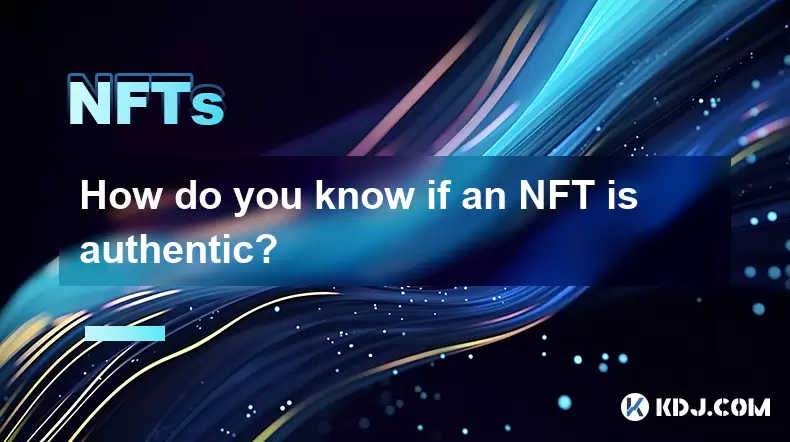
Understanding the Basics of NFT Authenticity
To determine whether an NFT is authentic, it’s essential to first understand what makes a non-fungible token unique. An NFT, or non-fungible token, is a digital certificate of ownership stored on the blockchain. The authenticity of an NFT depends on its blockchain verification, metadata integrity, and minting history. Unlike physical collectibles, digital assets can be copied infinitely, but only the original owner possesses the verified token linked to the asset.
Each NFT contains specific data that distinguishes it from others. This includes its token ID, smart contract address, and ownership records. These elements are immutable once recorded on the blockchain. Therefore, verifying these details becomes crucial when assessing authenticity.
Checking the Blockchain and Smart Contract
One of the most reliable ways to confirm an NFT's legitimacy is by examining its blockchain transaction history. Platforms like Etherscan, BscScan, or PolygonScan allow users to look up transactions associated with a particular NFT. By entering the contract address or wallet address, you can trace the entire lifecycle of the NFT from minting to current ownership.
The smart contract code should also be reviewed for any suspicious activity. Legitimate NFTs are usually created using well-known standards such as ERC-721 or ERC-1155 on Ethereum. You can check if the contract has been verified on the blockchain explorer. Verified contracts increase trust because their code is publicly visible and auditable.
- Visit a blockchain explorer like Etherscan.
- Paste the NFT’s smart contract address into the search bar.
- Review the “Contract” tab to see if it’s verified.
- Examine transaction logs under the “Transactions” tab.
Analyzing Ownership and Transfer Records
Ownership history plays a significant role in confirming NFT authenticity. A genuine NFT will have a clear and unbroken chain of ownership recorded on the blockchain. Any irregularities, such as sudden transfers from unknown wallets, may raise red flags.
You can view this information directly on marketplaces like OpenSea, LooksRare, or Blur. On OpenSea, for example, click on the “Details” section of the NFT and scroll down to the “Ownership” and “Event History” sections. These areas show who minted the NFT and every transfer it has undergone.
- Go to the NFT’s page on a marketplace.
- Locate the “Details” or “History” section.
- Check for consistent ownership and minting events.
- Be wary of NFTs with multiple rapid transfers or anonymous owners.
Verifying Metadata and Digital Fingerprint
Metadata is the behind-the-scenes data that links the NFT to its actual content—whether it’s an image, video, audio file, or other digital format. Authentic NFTs typically store metadata on decentralized systems like IPFS (InterPlanetary File System) or Arweave to ensure long-term accessibility and prevent tampering.
To verify metadata:
- Use tools like IPFS Gateways to access the raw metadata JSON file.
- Ensure the file hash matches the one recorded on the blockchain.
- Confirm that the metadata hasn’t been altered or redirected to another file.
Some NFTs use on-chain metadata, which stores all data directly on the blockchain. This method offers higher security compared to off-chain storage methods, which rely on third-party servers.
Evaluating Marketplace Verification and Creator Identity
Reputable NFT marketplaces often implement verification badges for creators and collections. For instance, OpenSea displays a blue checkmark next to officially verified accounts. While not foolproof, this feature adds an extra layer of credibility.
You should also cross-reference the creator’s identity across social media platforms. Many artists and brands announce new drops on Twitter, Discord, or personal websites. If the creator’s profile lacks activity or appears recently created, proceed with caution.
- Look for verification badges on the marketplace profile.
- Search for the creator’s name and wallet address on social media.
- Join official Discord channels to ask about collection authenticity.
Frequently Asked Questions
Q: Can someone fake an NFT even if it's on the blockchain?
A: While the blockchain itself cannot be altered, scammers can create counterfeit NFTs by uploading similar artwork or impersonating legitimate creators. Always verify the creator’s wallet address and transaction history before purchasing.
Q: How do I know if an NFT was minted by the real artist?
A: Check the minting address against the artist’s known wallet addresses. Artists often publish their wallet addresses on official channels like Twitter or Discord. Cross-referencing ensures you’re buying directly from the source.
Q: What tools help verify NFT authenticity?
A: Tools like Blockchair, DappRadar, and TokenID Finder provide insights into NFT provenance. Blockchain explorers such as Etherscan remain the most direct way to inspect smart contracts and transaction trails.
Q: Is it possible for an NFT to become inauthentic over time?
A: No, once an NFT is minted and recorded on the blockchain, it remains unchanged. However, the value and perceived authenticity can diminish if the creator loses credibility or if the metadata link breaks due to improper storage.
Disclaimer:info@kdj.com
The information provided is not trading advice. kdj.com does not assume any responsibility for any investments made based on the information provided in this article. Cryptocurrencies are highly volatile and it is highly recommended that you invest with caution after thorough research!
If you believe that the content used on this website infringes your copyright, please contact us immediately (info@kdj.com) and we will delete it promptly.
- Cantor Fitzgerald, Bitcoin, and SPAC Acquisitions: A New York Perspective
- 2025-07-16 10:30:12
- PoL v2 and BeraChain: Building a Stronger Blockchain Ecosystem
- 2025-07-16 10:30:12
- Bitcoin, Social Media, and FOMO: A New Yorker's Take on the Crypto Craze
- 2025-07-16 10:50:12
- GameStop, Bitcoin, and the Inflation Hedge: A New York Perspective
- 2025-07-16 08:30:12
- Tornado Cash on Trial: Privacy Tool or Money Laundering Machine?
- 2025-07-16 10:50:12
- Solana Memecoins Hit the Big Time: PUMP and Sonic Get Coinbase Listing Boost!
- 2025-07-16 06:50:12
Related knowledge
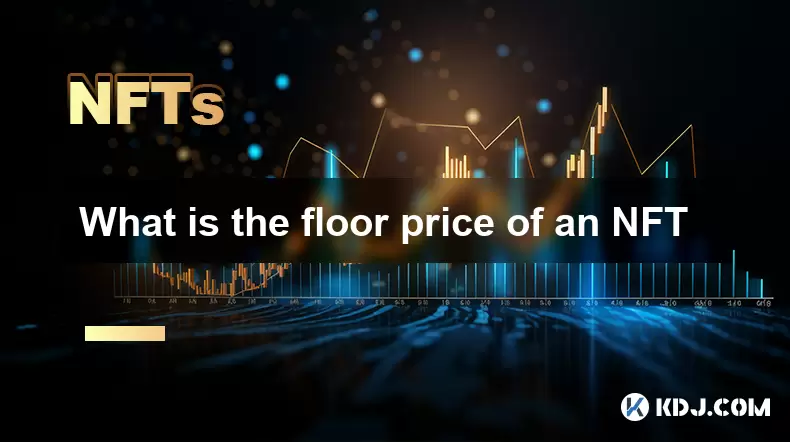
What is the floor price of an NFT
Jul 11,2025 at 07:56am
Understanding the Concept of Floor Price in NFTsIn the world of non-fungible tokens (NFTs), the floor price refers to the lowest price at which a part...
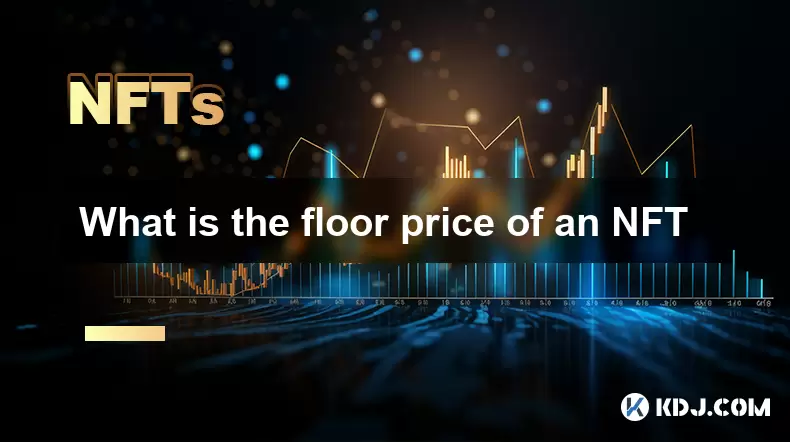
What is the floor price of an NFT
Jul 13,2025 at 06:21am
Understanding the Concept of Floor Price in NFTsThe floor price of an NFT (Non-Fungible Token) refers to the lowest listed price for a particular NFT ...
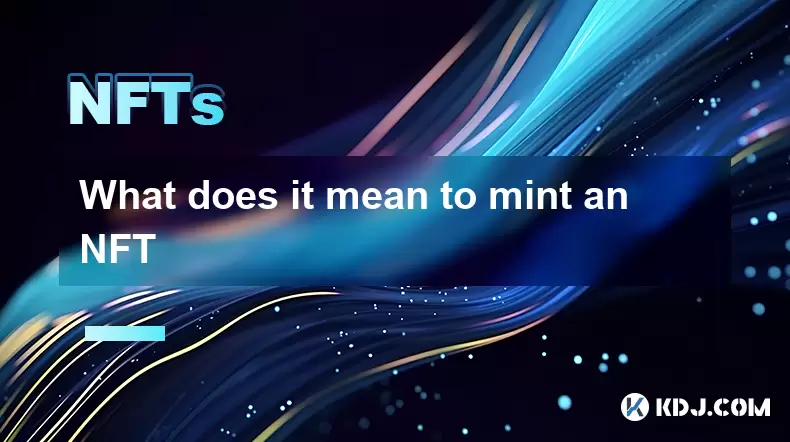
What does it mean to mint an NFT
Jul 11,2025 at 11:56pm
Understanding the Concept of Minting an NFTTo mint an NFT means to create a unique digital asset on a blockchain. This process involves converting a d...
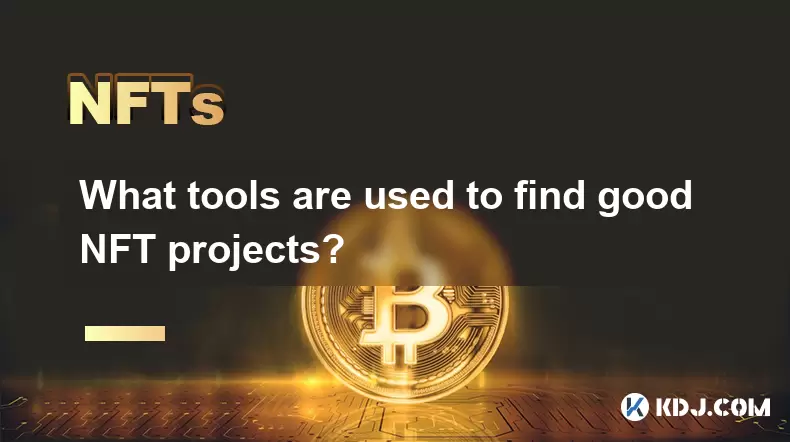
What tools are used to find good NFT projects?
Jul 10,2025 at 12:42pm
Understanding the Importance of NFT DiscoveryIdentifying promising NFT projects is a critical skill for collectors, investors, and creators within the...

What is the difference between owning the NFT and the IP?
Jul 15,2025 at 07:28pm
Understanding the Concept of NFT OwnershipWhen someone purchases an NFT (Non-Fungible Token), they are acquiring a unique digital certificate that pro...

How do you know if an NFT is authentic?
Jul 10,2025 at 06:35pm
Understanding the Basics of NFT AuthenticityTo determine whether an NFT is authentic, it’s essential to first understand what makes a non-fungible tok...

What is the floor price of an NFT
Jul 11,2025 at 07:56am
Understanding the Concept of Floor Price in NFTsIn the world of non-fungible tokens (NFTs), the floor price refers to the lowest price at which a part...

What is the floor price of an NFT
Jul 13,2025 at 06:21am
Understanding the Concept of Floor Price in NFTsThe floor price of an NFT (Non-Fungible Token) refers to the lowest listed price for a particular NFT ...

What does it mean to mint an NFT
Jul 11,2025 at 11:56pm
Understanding the Concept of Minting an NFTTo mint an NFT means to create a unique digital asset on a blockchain. This process involves converting a d...

What tools are used to find good NFT projects?
Jul 10,2025 at 12:42pm
Understanding the Importance of NFT DiscoveryIdentifying promising NFT projects is a critical skill for collectors, investors, and creators within the...

What is the difference between owning the NFT and the IP?
Jul 15,2025 at 07:28pm
Understanding the Concept of NFT OwnershipWhen someone purchases an NFT (Non-Fungible Token), they are acquiring a unique digital certificate that pro...

How do you know if an NFT is authentic?
Jul 10,2025 at 06:35pm
Understanding the Basics of NFT AuthenticityTo determine whether an NFT is authentic, it’s essential to first understand what makes a non-fungible tok...
See all articles

























































































